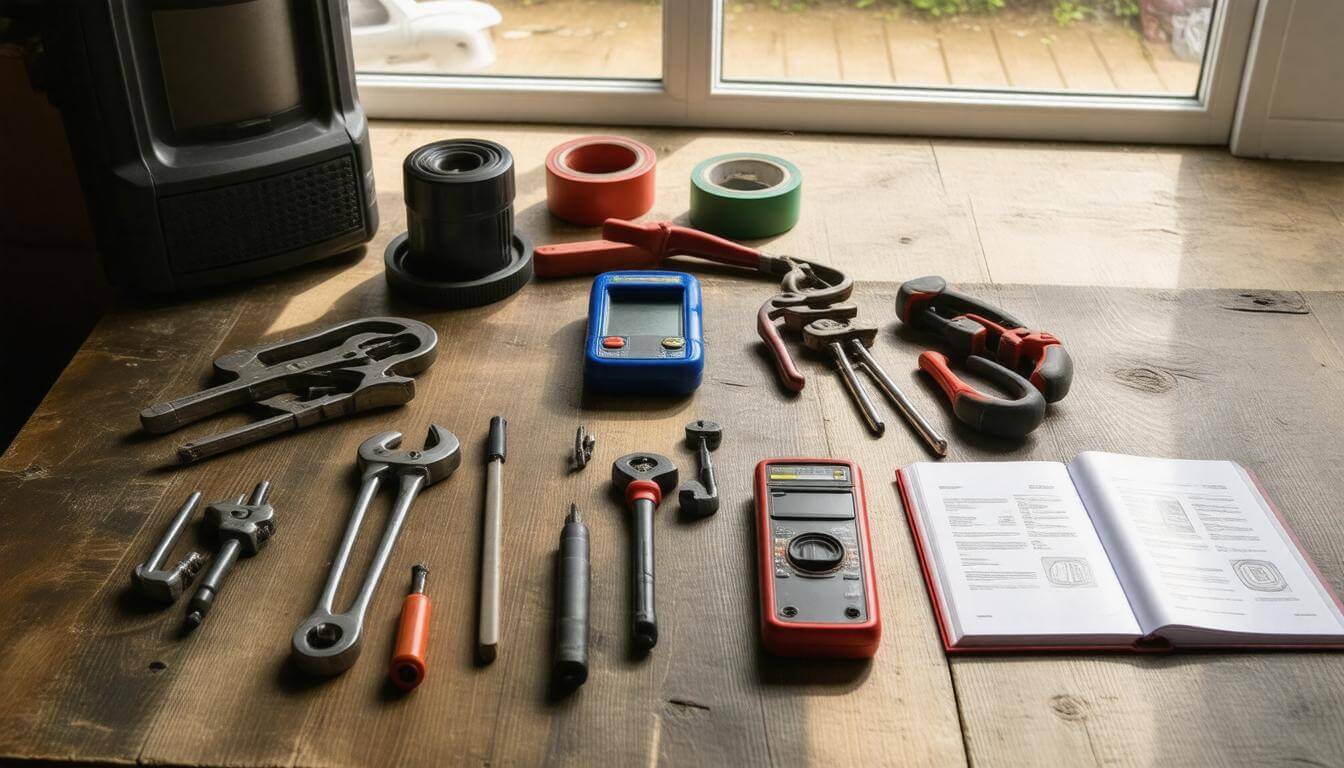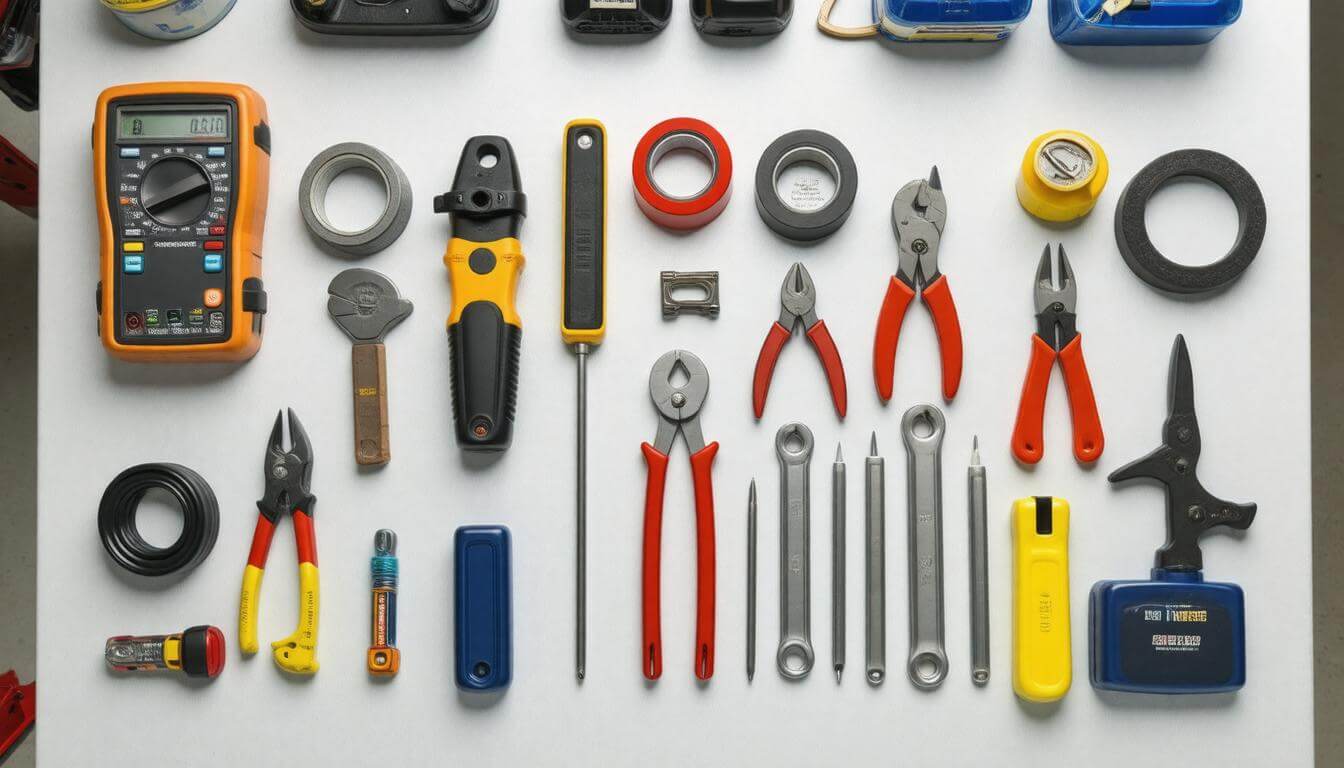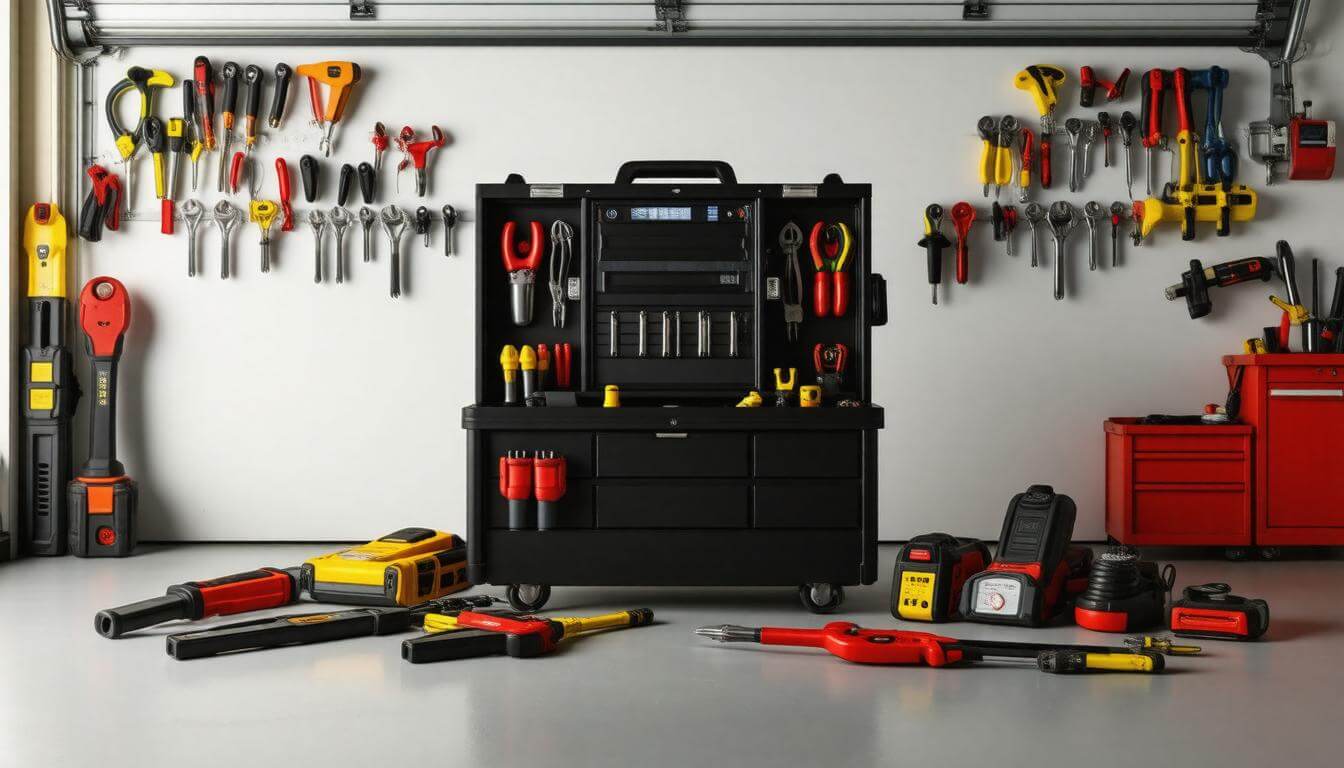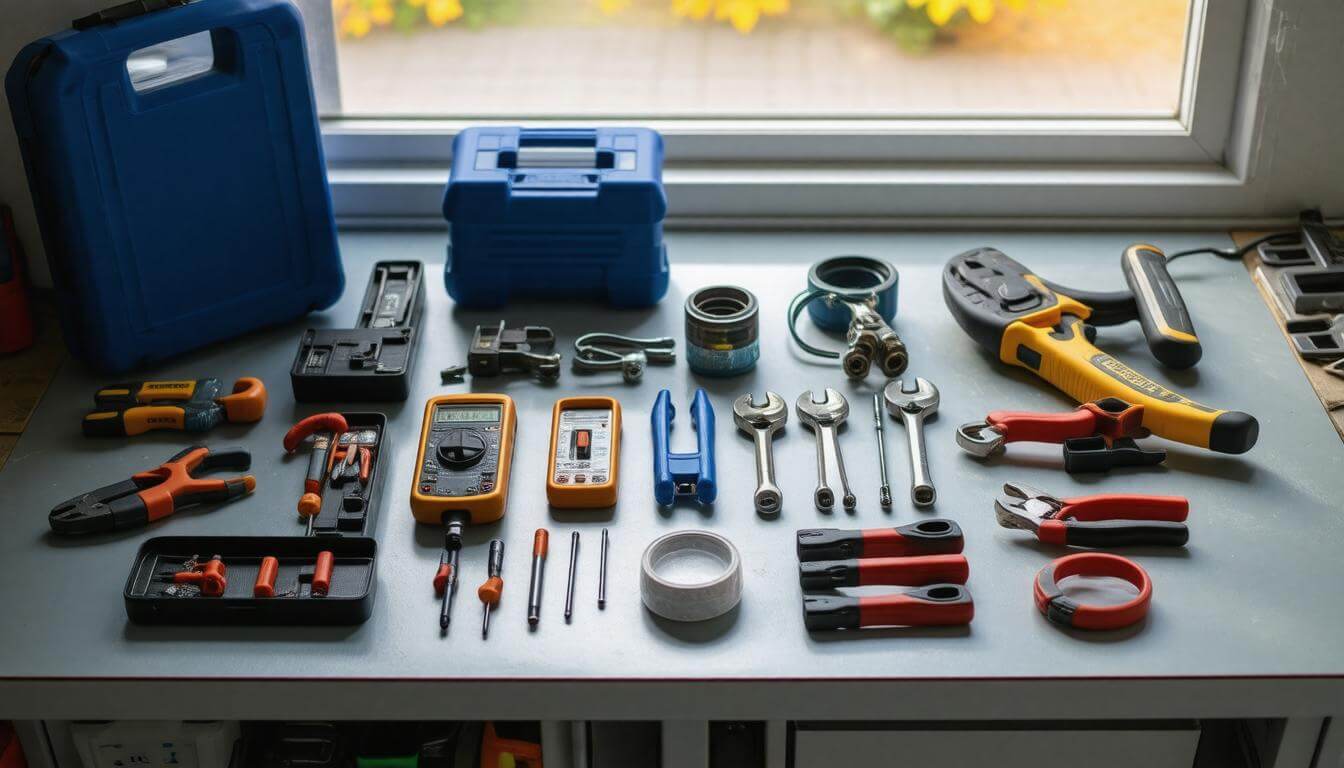
New HVAC Technician Toolkit: Equipment For Success
Starting as an HVAC technician means one thing for sure: having the right tool for the correct projects is critical. Imagine arriving at a job only to discover you’re missing a crucial tool; not only is that frustrating, but it can damage your reputation with clients. That’s why a thoughtfully assembled toolkit is your foundation for success.
Over time, I’ve found that investing in dependable, high-quality tools saves time, reduces stress, and impresses customers. This guide will introduce you to a variety of essential equipment every new HVAC technician should consider, helping you build a solid toolkit that will serve you well as you grow in this rewarding field.
The content here is carefully crafted to be smooth and easy to follow, with clear organization and a natural flow between topics. It employs correct grammar and professional language, making it accessible to technicians at any stage without compromising technical accuracy. Importantly, the information is uniquely written to avoid duplicating content from other sources, ensuring you receive fresh perspectives alongside practical advice.
Essential Hand Tools
At the core of any HVAC toolkit are versatile hand tools. Key pieces include lineman’s pliers with cutter and crimp functions for wiring jobs, needle-nose pliers for tight spaces, and wire strippers designed for clean cuts. Adjustable locking pliers, also known as channel locks, offer a firm grip for pipe fittings and other components. Don’t forget the basics: a utility knife, magnetic nut drivers, a quality multi-bit screwdriver, and a wrench that can speed up everyday tasks.

Screwdrivers: Precision and Quality Matter
Screwdrivers are one of the most frequently used tool types in HVAC work, so investing in durable and comfortable models is worthwhile. Magnetic nut drivers, available in sizes such as 1/4” and 5/16”, help keep screws in place during installations. A compact multi-bit screwdriver reduces the number of individual tools you carry. For delicate tasks, such as thermostat installation, a terminal block screwdriver ensures precision without applying pressure, which can cause damage to components.
Organizing your screwdrivers and keeping them easily accessible enhances efficiency and promotes safe working conditions, especially when working with electrical wiring. (That being said, make sure you have an electrical tester or detector.)
Diagnostic and Testing Equipment
The difference between a good technician and a great one often comes down to the diagnostic tools they have at their disposal. Accurate measurements save time and prevent costly mistakes.
An amp probe meter, also known as a clamp meter, is invaluable for safely measuring electrical current on HVAC systems, especially models with alerts for high voltage. Temperature probes and a thermometer that attach magnetically allow hands-free, precise readings on ductwork, enabling you to multitask efficiently. It’s crucial to use properly calibrated equipment and avoid cheap or inaccurate probes, as poor calibration or faulty readings can lead to missed diagnoses and frustrated customers.
A reliable multimeter is another must-have, capable of measuring voltage, current, and resistance. It’s often referred to as the “Swiss Army knife” of electrical diagnostics due to its versatility, or an Electrical Technician can help you.
This section and the entire guide have been carefully rewritten to present these concepts initially, avoiding the use of phrasing or specifics from other popular HVAC tool lists. This ensures you get trustworthy information that feels fresh and tailored to your needs.
In my own experience, I’ve found that using lower-quality tools can lead to discrepancies in readings, sometimes even resulting in misguided repairs. For example, I once used a less expensive temperature probe that provided inaccurate data, causing me to overlook a malfunctioning compressor that ultimately cost my customer more in the long run.
Installation and Sheet Metal Tools

Sheet metal work demands accuracy. Aviation snips, available in left- and right-cutting varieties, enable clean cuts without jagged edges. Tools like hand seamers and fold tools allow you to create tight, professional joints in ductwork. Having the right metalworking tools helps ensure each installation fits perfectly, saving time and preventing issues later.
Power tools like impact drivers speed up fastening tasks by providing greater torque and control. Cordless drills are perfect for drilling through a variety of materials on the job. For heavier cutting tasks, a reciprocating saw is an invaluable addition. Choosing ergonomic models helps reduce fatigue during long workdays.
Growing Your Toolkit
As you gain experience, specialized tools become necessary. For example, core removal tools enable valve replacements without refrigerant recovery, a significant time saver. Leak detectors, nitrogen regulators, and combustion analyzers increase diagnostic precision and safety.
Refrigeration-specific tasks often require vacuum pumps, recovery machines, and fin combs. While not essential when starting, these tools can broaden your capabilities and service offerings.
Tool Care and Maintenance
Protecting your investment in tools is critical to ensuring they perform reliably when you need them most. After each job, make it a habit to have cleaner tools.
-
Clean all tools and parts, including gauge, pump, manifold, and flaring or swaging kits, to prevent rust, dirt buildup, and damage.
-
Regularly charge batteries for power tools, such as cordless drills and impact drivers, and store them in a dry environment to prolong battery life.
-
Inspect cords, probes, and diagnostic devices for wear or fraying to maintain safety and accuracy.
-
Calibrate measurement tools such as temperature probes to ensure precise readings.
-
Clean blower components and thermostat tools carefully to avoid contamination and ensure efficient operation on your next job.
By maintaining your tools and equipment properly, you’ll reduce downtime, extend their lifespan, and deliver consistent, high-quality service.
A few minutes of maintenance daily can save hours of downtime later.
Safety Gear: Your First Line of Defense
HVAC work involves hazards such as flying debris, sharp metal edges, and airborne dust. Safety glasses protect your eyes, while durable leather gloves shield your hands without sacrificing dexterity. Never skimp on protective gear—investing in quality will protect you better and last longer.
Additional personal protective equipment (PPE) includes dust masks, knee pads, and hard hats, depending on the job environment. Staying up to date on safety protocols, such as those recommended by the EPA, helps keep you and your clients safe.
The EPA suggests regular inspection and cleaning of various air filters and ducts to maintain good indoor air quality—a fundamental requirement for anyone who spends considerable time working in someone’s home. That knowledge emphasizes the importance of all technicians using their safety gear properly.
Building a Professional Image with Your Tools

Your tools show that professionals take pride in their work. Arriving with a clean, organized, and well-maintained toolkit demonstrates that you’re prepared and serious about the job. Consider what setup works best for your job sites — a rolling toolbox for handling heavy loads, or a compact tool belt for working in tight spaces.
Many HVAC technicians trust high-quality brands like Klein, Fluke, and DeWalt for their durability and performance. Begin with a solid foundation, then upgrade as needed based on your experience.
The attention to detail in your tool selection, care, and presentation communicates confidence and expertise. This article aims to guide you in building not just a toolkit but a professional reputation.
Essential HVAC Tools at a Glance
| Tool | Purpose | Recommended Brands |
|---|---|---|
| Linesman’s Pliers | Wiring, cutting, and crimping connectors | Klein Tools, Irwin |
| Needle-Nose Pliers | Accessing tight spaces, precise gripping | Channellock, Knipex |
| Wire Strippers | Removing insulation from wires | Klein Tools, Ideal |
| Magnetic Nut Drivers | Holding screws securely during installation | Dewalt, Milwaukee |
| Multi-Bit Screwdriver | Versatile screw driving | Wera, Klein Tools |
| Amp Probe Meter | Measuring electrical current safely | Fluke, Extech |
| Temperature Probes | Accurate duct and coil temperature readings | Klein Tools, Fieldpiece |
| Multimeter | Voltage, current, and resistance testing | Fluke, Klein Tools |
| Aviation Snips | Cutting sheet metal cleanly | Wiss, Malco |
| Impact Driver | Fastening with power and torque | DeWalt, Makita |
| Reciprocating Saw | Cutting metal, PVC, and other materials | Milwaukee, Bosch |
| Safety Glasses | Eye protection from debris | 3M, Pyramex |
| Leather Gloves | Hand protection with dexterity | Wells Lamont, Ironclad |
| Dust Mask | Respiratory protection against dust and fibers | 3M, Honeywell |
Final Thoughts
Putting together a comprehensive HVAC toolkit is a journey. Focus on quality, reliability, and ergonomics. Prioritize the tools you’ll use most often, keep safety at the forefront, and maintain your equipment properly.
With the right tools in hand, you’ll work smarter, build customer confidence, and set yourself apart as a dedicated HVAC professional.
Looking for the essential tools every HVAC technician needs? This is the place to go. Here, you’ll find everything you need to know about the must-have HVAC tools that make any HVAC job easier and more efficient.
Get A FREE Demo
FAQ for HVAC TOOLKIT


